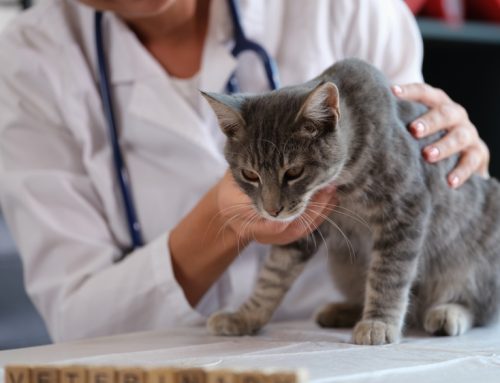Your pet’s food is crucial to their health, energy level, and general well-being. With many options available on the market, how do you know which diet to choose and the food’s quality? Understanding pet food labels can give you insight into your furry pal’s diet and nutrition. Our Chiefland Animal Hospital team breaks down pet food label components and provides you with everything you need to know to make informed decisions about your pet’s diet.
Pet food oversight
The Association of Animal Feed Control Officials (AAFCO) is a nonprofit organization in which professionals volunteer to set livestock feed and pet food nutrition standards. The group also regulates pet food labeling, as well as sales and distribution. AAFCO oversees how pet food labels are created and the information they provide.
Pet food ingredient list
The ingredient list is a pet food label’s most critical part, providing insight into what your pet’s food contains. Ingredients are listed in descending order by weight, with the most abundant ingredient presented first. Look for whole proteins, such as chicken, beef, or salmon, listed at the top.
Many pet owners wonder if the terms byproducts or meals listed next to protein sources are as healthy as muscle meats. They are! Animal byproducts is the term for organ meats and animal parts, which offer essential nutrients that muscle meat alone can’t provide.
Pet food guaranteed analysis
The label’s guaranteed analysis section outlines the minimum or maximum percentages of certain nutrients in the food. The term guaranteed analysis typically includes crude protein, fat, fiber, and moisture. Remember that these are minimum or maximum values and don’t necessarily reflect the food’s exact nutritional content. The term guaranteed implies the nutritional standard being met rather than qualifying the food as the best or most nutritious.
Pet food nutritional adequacy statement
This statement indicates whether the food is complete and balanced for a particular life stage such as kitten or puppy maintenance or all life stages. Ensure that the food you are feeding your pet is appropriate for their age, size, and activity level. Avoid giving your puppy or kitten an adult diet because furry youngsters require additional nutrients that cannot be met through eating adult foods. This same concept is true for adults and senior pets, who have a special diet formulated for their life stage.
Pet food feeding guidelines
Feeding guidelines provide AAFCO-determined recommendations on the food amount to feed your pet based on their weight. However, these guidelines are just that—guidelines. Factors, such as age, activity level, and metabolism, can affect your pet’s caloric needs, so monitoring their weight and adjusting their portion size are essential. Discuss your pet’s daily food intake needs with our Chiefland Animal Hospital veterinarian. Daily feeding guidelines don’t consider your pet’s current health status, energy level, or lifestyle, all of which determine the amount of food your pet should eat daily.
Understanding pet food trends and claims

Like most industries, pet food manufacturers use marketing to promote sales. They may use clever tactics to increase sales by making their product seem enticing. Consider these catchphrases used to sell pet food, including:
- All-natural
- Grain-free
- Wild
- Organic
- Gourmet
- Special
- Lite
- Customized
Pet food labels often feature various claims, but buyer beware: Many claims are not rooted in science or evidence. The U.S. Food and Drug Administration (FDA), after consumer complaints, now has more stringent guidelines about pet food claims. Being able to understand your pet’s food label is an excellent start to learning what the food contains. Doing your own thorough evidence-based research about pet nutrition trends can help ensure you’re not just buying into the fluff without the substance.
You want your four-legged friend to have a well-balanced, nutritious diet. Understanding pet food labels is integral to making informed decisions about a food’s nutritious value. While most pets aren’t too fussy about their food, providing adequate nutrition for your furry pal is your responsibility. Do you need help determining which diet is appropriate for your pet? Consult with our Chiefland Animal Hospital team for pet food recommendations.








Leave A Comment